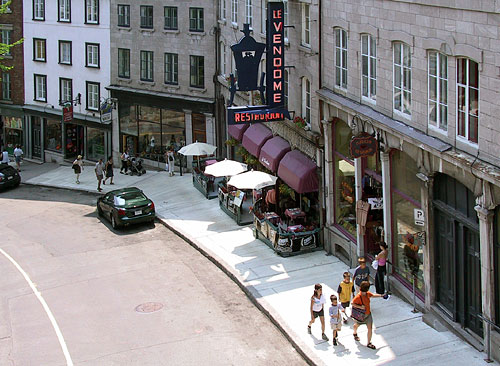On March 26, Pringle Creek in Salem, OR was named Land Development of the Year by the NAHB’s National Green Building Awards. The designation is a new category for the Green Building Awards, and Pringle Creek is the first development to win it.
Pringle Creek is pursuing a full suite of sustainability practices. One of the more experimental is the system of porous streets that capture and purify stormwater runoff. The developers call it an “innovative storm water management system utilizing the largest community porous asphalt and concrete road system in North America.”
Here’s a cross-section of the street design:


